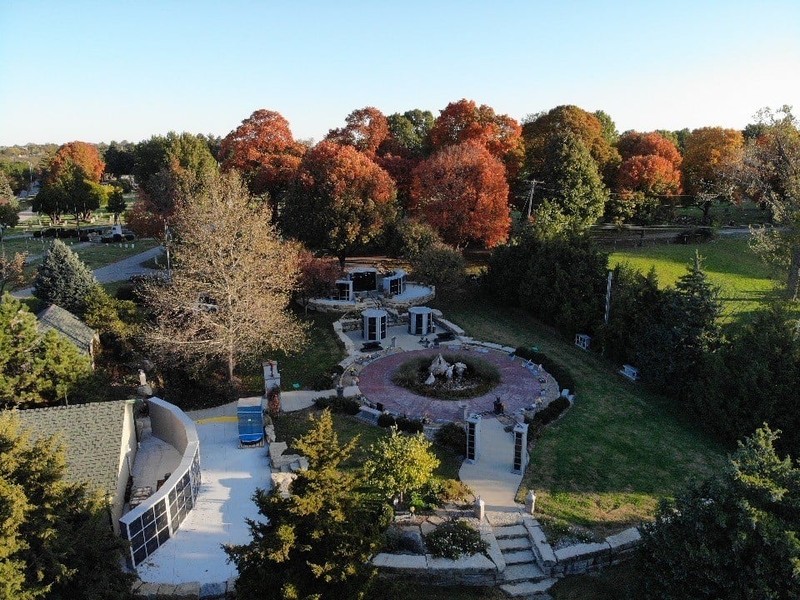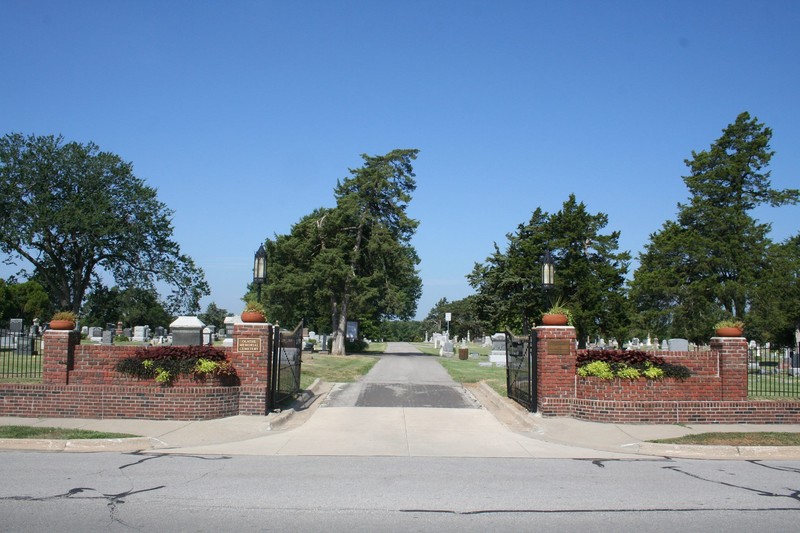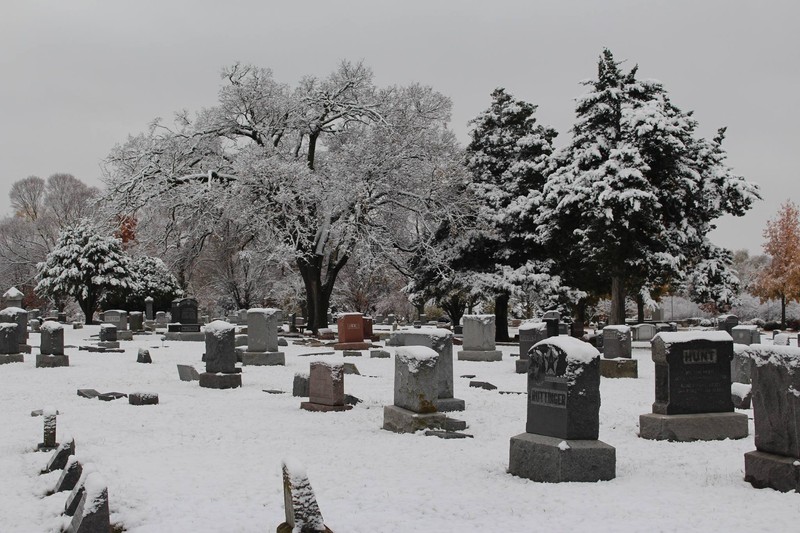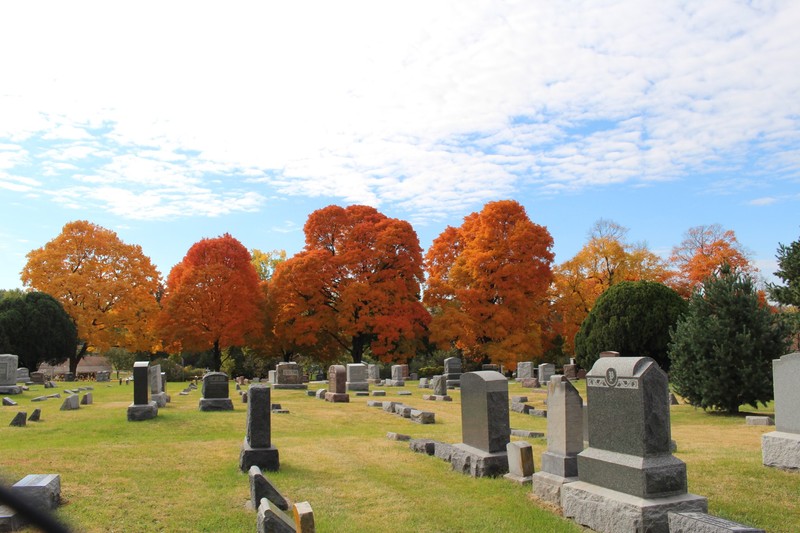Olathe Cemetery (Olathe Memorial Cemetery)
Introduction
Text-to-speech Audio
Established in 1865, the tombstones and plots at the Olathe Memorial Cemetery tell the story of Olathe's and Johnson Country's history. Six of the city's first ten citizens are buried here, as are early mayors, business leaders, veterans who fought during the Civil War which occurred only four years after the town's founding. The cemetery's headstones share information about family histories and Olathe's ties to the Civil War, Santa Fe Trail, World Wars, women's suffrage, and the New Deal. The historic burial site stands as the city's oldest public cemetery, and it remains active today.
Images
Olathe Cemetery (Olathe Memorial Cemetery)

Olathe Cemetery (Olathe Memorial Cemetery)

Olathe Cemetery (Olathe Memorial Cemetery)

Olathe Cemetery (Olathe Memorial Cemetery)

Backstory and Context
Text-to-speech Audio
The Olathe Cemetery (Olathe Memorial Cemetery) is Olathe's oldest public cemetery, and it remains active today. Olathe Cemetary contains graves of several noteworthy persons, many of whom speak to the town's early exploration, settlement, and development; the first burial occurred in 1865. Additionally, the cemetery's shelter house represents the improvements made in 1937, performed by workers associated with the Works Progress Administration (WPA) during the Great Depression.
In 1857, Dr. John T. Barton, born in Albemarle County, Virginia, founded Olathe, which serves as Johnson County's county seat (Olathe was incorporated in 1857 and re-incorporated in 1858). Olathe is the Shawnee word for "beautiful." Olathe emerged three years after the establishment of the Kansas Territory and four years before the state's admittance into the Union in 1861 as a free state. During the Civil War, the town primarily functioned as a military camp.
Watts Beckwith, a gardener and florist who came to Olathe from New York, argued that Olathe and Johnson County officials had failed to make provisions for the burial of the dead. So, in 1865, he donated ten acres of his land to use as a cemetery to alleviate crowding issues at Church Square (a cemetery that no longer exists). Beckwith's sister, Elvira, was the first person buried in the now-historic cemetery on April 30, 1865, and is the only member of the Beckwith family buried in Olathe cemetery.
The land Beckwith donated sat just outside Olathe's city limits in 1865, but the city acquired the cemetery and five additional acres in 1879. Ten years later, in June 1889, the town added to the cemetery by acquiring eight additional acres immediately south of the original plat. Olathe also owned twenty acres of orchards adjacent to the cemetery, which eventually became a city park (and a subdivision by the 1950s).
The now-historic cemetery is the final resting place for many of Olathe's early settlers and officials. The city's first mayor (William Pellet, elected in 1870), the first town marshall, its first postmaster, and four councilmen are buried in Olathe Memorial. And three of four members of Olathe's first board of trustees (est. 1859) are buried in the historic cemetery. One trustee, A.J. Clemmans, won three straight elections as the town sheriff. Thus, the cemetery remains a reflection of their contributions to the history of Johnson County.
In fact, six of Olathe's first ten citizens are buried in Olathe Memorial Cemetery, including James Beattie Mahaffie (buried 1907). He came to Johnson County in 1857 and enjoyed exceptional success as a farmer. But, he is known for opening in 1864 a farmstead as a stagecoach stop, known as Mahaffie Station, the first stop for stagecoaches traveling along the Santa Fe Trail. Indeed, after the Civil War, Olathe became a major stop along the Santa Fe Trail, with as many as 600 wagons passing through Olathe on the way toward the West (for more, see The Clio Project: Mahaffie Stagecoach Stop and Farm, linked below).
In 1878, John Pierce St. John (buried 1916) became the first of several Olathe residents to become governor of Kansas. St. John served in the State Senate from 1873 to 1874, then as governor from 1878 to 1882. During his tenure, he passed the Prohibitory Law in 1881, supported the construction of a State Reform School in Topeka, and helped create the Kansas Freedmen's Relief Association during the Great "Exodusters" movement of African-Americans to Kansas in 1879.
One can find plots of several officers in charge of Johnson County regiments and companies of the Kansas State Militia during the Civil War. Also, many victims of the guerrilla conflicts in Johnson County during the Civil War, including five men who served in the Twelfth Regiment Kansas Volunteer Infantry, were laid to rest in Olathe Memorial Cemetery. Their burials speak to such events as the raid on Olathe on September 7, 1862. A notorious Confederate guerilla leader, William Quantrill, and roughly 140 men surprised residents and attacked Olathe. Guerrillas raided the city, robbed numerous businesses and homes, and destroyed the two newspaper offices.
Another notable burial includes Colonel Josiah Emery Hayes, who moved to Olathe in 1857 (from New Hampshire) and erected numerous buildings, including the Kansas Institute for the Deaf and Dumb. Hayes, Lieutenant-Colonel of the Twelfth Kansas Infantry, had his leg amputated on the field during the Battle of Jenkin's Ferry and then taken prisoner. Confederate troops transported him to Shreveport, Louisiana, and he remained a prisoner there until 1864. After the Civil War, Colonel Hayes built several buildings in town (including the Kansas Institute for the Deaf and Dumb), was elected County Treasurer, became head of the Johnson County Bank, and then, in 1870, was elected State Treasurer (reelected in 1872). On March 8, 1881, Hayes died from complications tied to the wound he suffered during the Civil War battle.
After the Civil War, tens of thousands of German (and other European) immigrants, along with German-American migrants, came to Kansas. Examples of that exist throughout the cemetery. For instance, Charles Henry (C.H.) Hyer, the son of an immigrant German shoemaker, moved to Olathe in the mid-1870s and taught shoe and harness making at the Kansas School for the Deaf. Hyer, and his sons, created mail-order catalogs with a measurement chart that enabled customers, such as Buffalo Bill Cody, Clark Gable, Will Rogers, and Dwight Eisenhower, to order custom-made boots. Hyer employed mainly immigrant craftsmen from Germany, Sweden, and Poland as well as hearing-impaired residents from the Kansas School for the Deaf. During World War I, Hyer and Sons made boots for the officers at Fort Leavenworth and Camp Funston. He, and many of his employees, can be found buried at Olathe Memorial Cemetery.
Indeed, numerous successful businesspersons have been laid to rest in Olathe Memorial Cemetery over the years, including many who became influential leaders. For example, George and Frank Hodges founded the Hodges Brothers Lumber Company in 1889; it eventually grew to fourteen lumberyards in Johnson County by 1933. Frank also served two terms as mayor of Olathe; he spearheaded the city's first waterworks and sewer system and oversaw the grading of the town's streets. Meanwhile, George Hodges served on the city council, helping the city get its first electric lights, and then he was elected State senator before serving as Kansas's second Democratic governor. He became known as an advocate for progressive platforms such as establishing a corporation tax, passing women's suffrage, increasing the number of women in the Kansas government from one to twenty-eight (during his term in office), and overseeing the ratification of the seventeenth amendment
Genoa Livermore is buried in the Livermore family mausoleum with her husband and children (and their spouses). In 1873, Genoa married Harvey Crane Livermore, and several years later, they moved to Olathe. She was a member of the Ladies Reading Circle (the first literary society organized in Olathe), a member of the Library Board, became the first president of the Olathe Improvement Society, and was matron of the Eastern Star. In addition, Mrs. Livermore organized a Red Cross chapter in Johnson County shortly after the Civil War.
At 22 years of age, Private Earl Milton Collier became the first soldier from Olathe (and second from Johnson County) to die in World War I; he was buried in the World War Memorial of the Olathe Memorial Cemetery. In 1926, the City of Olathe donated a monument along with 186 graves in memory of the soldiers and marines of the Spanish-American War and the World War. Earl Collier's parents donated money as a perpetual fund for the area's upkeep in memory of their son. In September 1942, Don Roberds was the first Olathe airman (the U.S. Government purchased a naval training site -- Olathe Naval Air Station -- located southwest of Olathe in January 1942) to lose his life during World War II. There are also gravestones honoring two men who died during the Korean War.
In 1937 the Works Progress Administration (WPA) improved the cemetery by adding stone entryways and a shelter house; only the shelter house remains today, but it represents improvements made as part of Franklin D. Roosevelt's New Deal programs during the Great Depression. Nineteen years later, in 1956, the city transformed the original city park into the present Elmwood subdivision, which established the current boundaries to the cemetery. Today, the Olathe Cemetery, or Olathe Memorial Cemetery, serves as a home to numerous monuments to the town's, county's, and nation's history.
Sources
Enersen, Jill Adams. "Registration Form: Olathe Cemetery." National Register of Historic Places. kshs.org. 2017. https://www.kshs.org/resource/national_register/nominationsNRDB/JohnsonCounty_OlatheCemeteryNR.pdf.
Kansas Historical Society. "German Settlers in Kansas." December 2017. https://www.kshs.org/kansapedia/german-settlers-in-kansas/16710.
Olathe Historical Society. Accessed February 16, 2022. https://www.olathehistoricalsociety.org/.
"Olathe History." Olathe Kansas. olatheks.org. Accessed February 16, 2022. https://www.olatheks.org/visitors/olathe-history.
Turk, Eleanor L. "Kansas History: A Journal of the Central Plains 28 (Spring 2005): 44–71.
https://www.facebook.com/olathememorialcemetery/
https://www.facebook.com/olathememorialcemetery/
https://www.facebook.com/olathememorialcemetery/
https://www.facebook.com/olathememorialcemetery/
